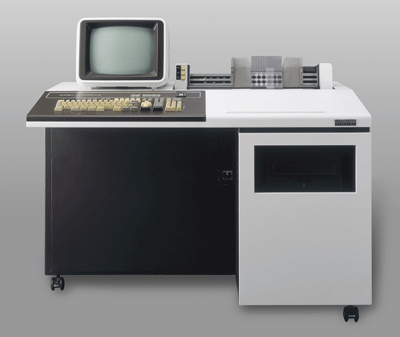

- Home >
- Artifacts of IP Heritage >
- 2008 >
- JW-10
JW-10

| Manufactured in | 1978 |
|---|---|
| Manufactured by | Tokyo Shibaura Electric Co., Ltd. (Now, Toshiba Corporation) |
| Owner | Toshiba Corporation |
| Location of historical materials | Toshiba Corporation Lazona Kawasaki Toshiba Bldg., 72-34, Horikawa-Cho, Saiwai-Ku, Kawasaki 212-8585, Japan |
| Visitor information | Not open to the public |
| Contact | Toshiba Corporation Tel.+81-80-6896-5758 https://www.global.toshiba/ww/top.html |
This was the first Japanese language word processor, developed by Tokyo Shibaura Electric (Now, Toshiba Corporation) in 1978. It was announced in September 1978, and first shipped in February 1979.
At the time, katakana were the only Japanese characters computers could handle (except for some systems using special equipment) due to the difficulty of inputting kanji. Toshiba conducted basic research on kana-kanji conversion using "phrase designation input" as a kanji input method, and this feature was incorporated into an office desk sized computer. It was announced as the JW-10 Japanese language word processor. "Phrase designation input" is a method where the reading of a sentence is input in phrase units. The biggest issue in developing kana-kanji conversion technology was selection of different kanji with the same reading (kanji homonyms). In the end, it was decided to adopt a method based on factors such as the sentence context and use frequency.
Thereafter, many companies successfully developed their own Japanese word processors. Some of them adopted the kana-kanji conversion method, but the others applied different methods. For some years, there had been a few different methods. The kana-kanji conversion method, however, has eventually become standardized, and allowed for the widespread handling of Japanese characters on most computers.
